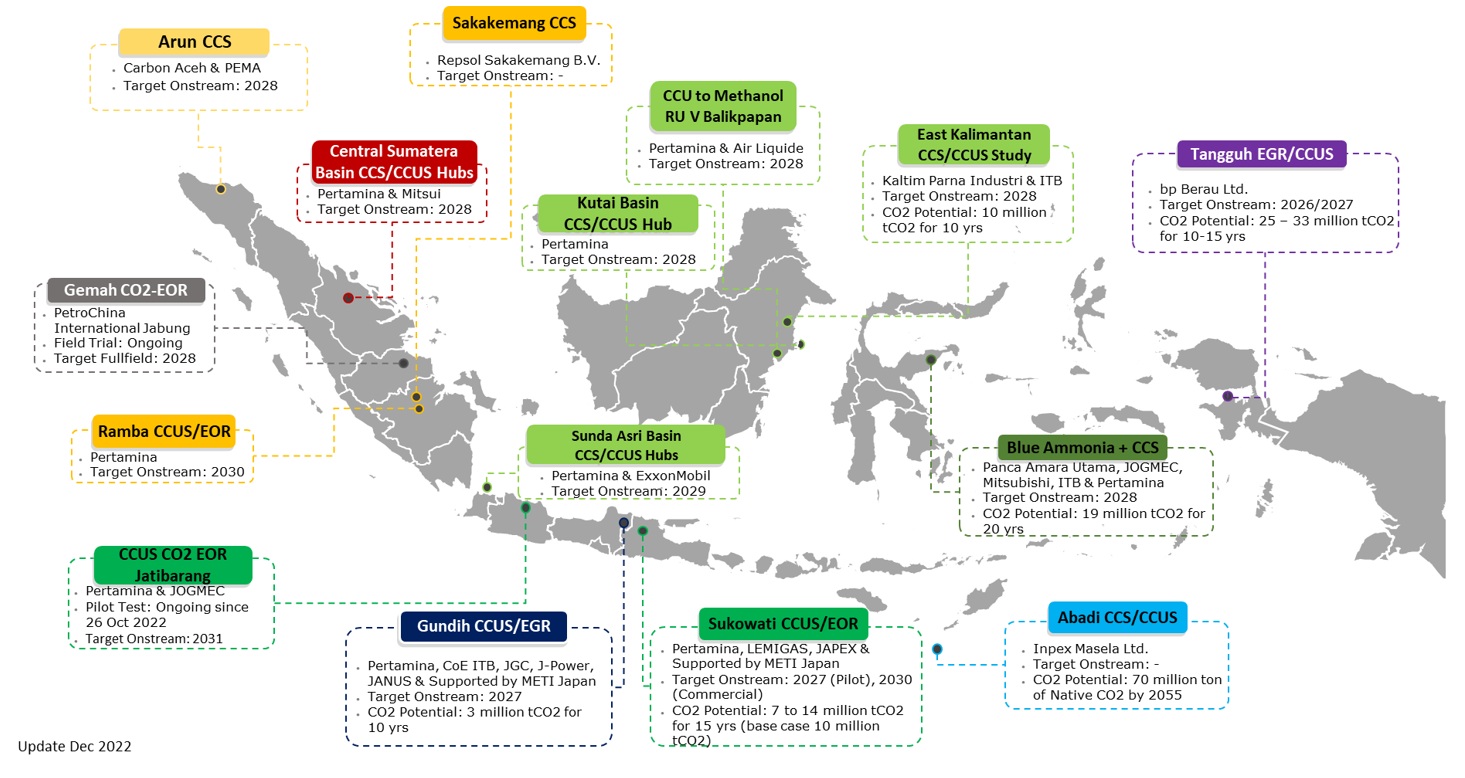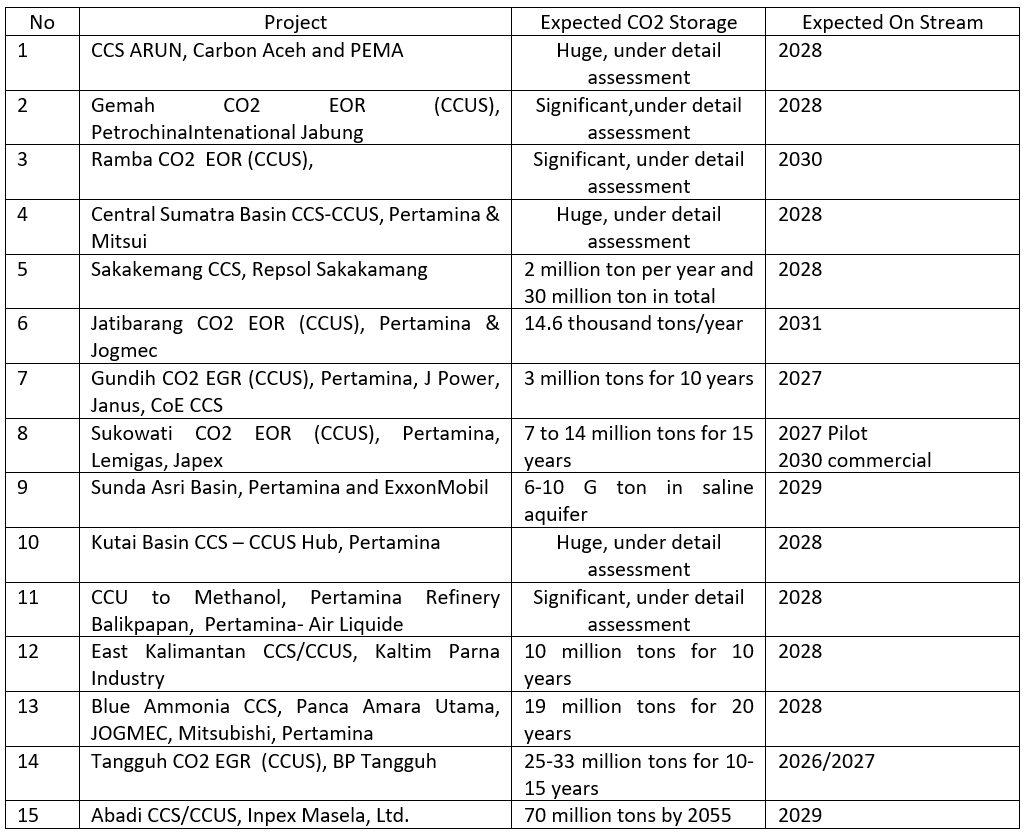Indonesia Tabled CCS and CCUS in Net Zero Emission Road Map: Opening Possibilities for Cross-Border Carbon Trading/Storage
By I Gusti Suarnaya Sidemen, ERIA Expert on CCS/CCUS - ACN Advisory Member
26 May 2023
Indonesia has announced to achieve Net Zero Emission (NZE) by 2060 in September 2022. Under the Announced Pledges Scenario (APS) to achieve NZE, Carbon Capture and Storage (CCS) and Carbon Capture, Utilization and Storage (CCUS) will play an important role in the energy transition pathway, which is targeted to start operating in Indonesia in 2026. Although CCS and CCUS have yet to be included in the APS, considering the current storage capacity assessment in Arun Field, East Kalimantan, and Sunda Asri Basin, CCS certainly will put Indonesia as one of the most significant parts in Regional CO2 storage in Asia.
Storage assessments conducted by LEMIGAS in 2009, 2012 and 2015 concluded that Indonesia has CO2 storage capacity potential of 12,2 billion tons; of which 2.5 billion tons of CO2 capacity located in depleted oil and gas reservoirs and 9.7 billion tons located in saline aquifers. The CO2 storage capacity is distributed regionally, in the South Sumatra region ( 924 Million Ton depleted oil and gas reservoir and 7,7 billion tons saline aquifer), East Kalimantan region ( 140 million ton depleted reservoir), Central-South Kalimantan (10 million ton depleted reservoir), Central Sulawesi (19 million depleted reservoir) Central Sumatra (229 million tons), West Java (402 million tons depleted reservoir and 2029 million tons saline aquifer, East Java (116 million ton depleted reservoir), Masela (depleted reservoir), and West Papua (551 million tons depleted reservoir).
Currently, 15 CCS/CCUS projects are in the pipelines as shown in the following map.
Among 15 projects, 8 projects will start their operation between 2026 to 2035 and contribute to Indonesia's emission reduction target. It is projected that CCUS will contribute to reduce 2,5 million tons of CO2 per year, starting from 2026. This figure is projected to gradually increase, from 2.5 million tons/year in 2026 to 7,9 million tons per year in 2030 and eventually will reach 8,6 million tons per year in 2031, with no additional capacity expected from 2031 until 2035. Cumulative CO2 stored is projected to reach 25,5 million tons and 68.2 million tons in 2030 and 2035, respectively. A report produced in collaboration between IEA and the Ministry of Energy and Mineral Resources stated that capturing and injection capacity will reach 190 million tons in 2060.
Early May 2023, the Government of Indonesia reemphasized the importance of cross-border emission trading policy, which is crucial in the development of CCS and CCUS projects, especially in Indonesia itself. Currently, a Government Regulation is being drafted to allow cross-border CO2 transportation and storage in Indonesia. The administration will be centrally governed by the Ministry of Environment with National Registry System to promote fair trading and avoid double counting. In addition, GOI acknowledges the potential of CO2 storage capacity available in Indonesia for storing emissions from other neighboring countries. Among the potential locations for cross-border emission storage are Arun Field, Sunda Asri Basin, and East Kalimantan Basin, which possess huge potential capacity and prospects to be developed as CCS hubs in Asia. With the Government Regulation in place, GOI expects to contribute significantly to reduce CO2 emission regionally as well as to invite investors to join the Government in realizing the effort.


